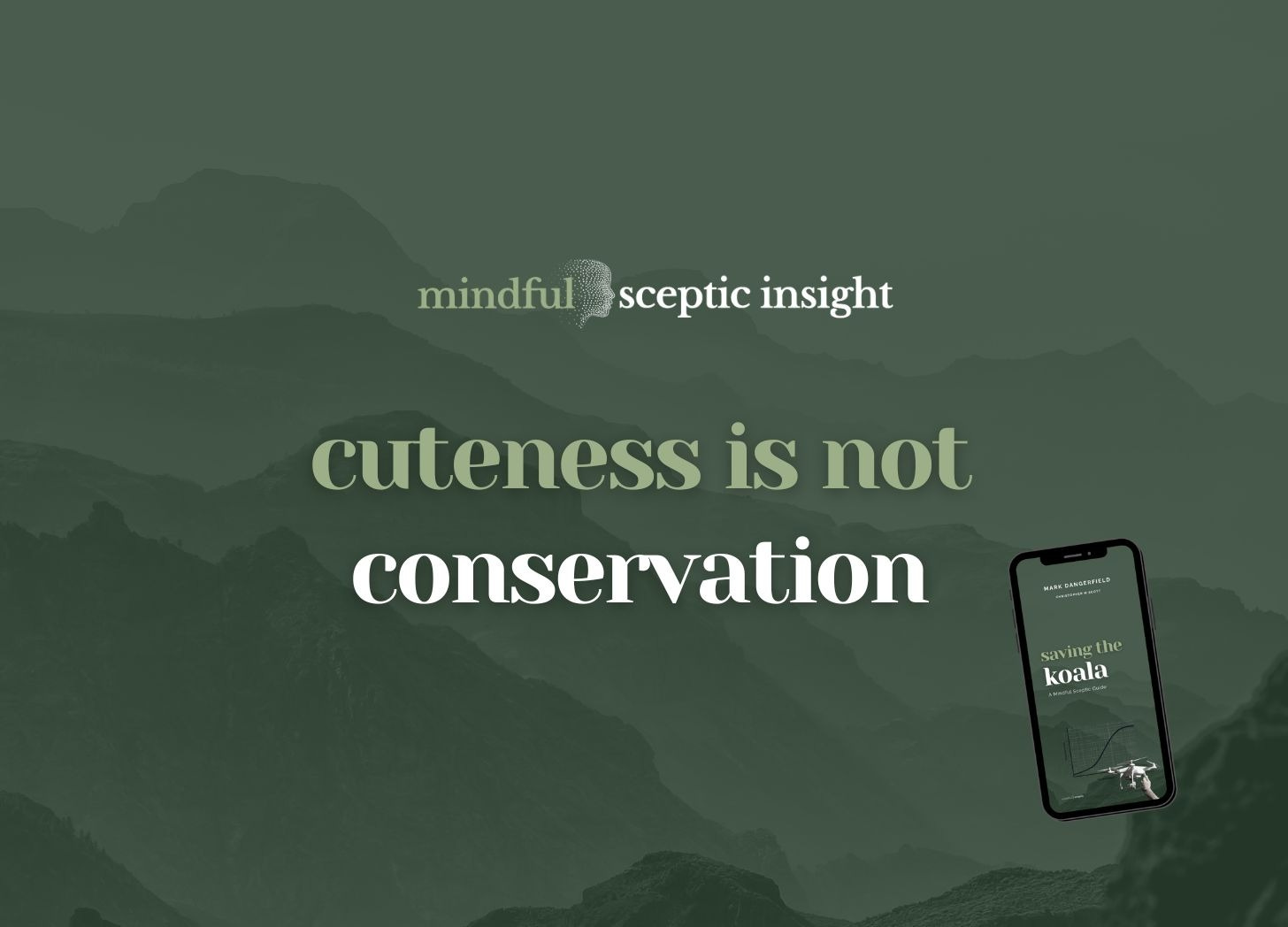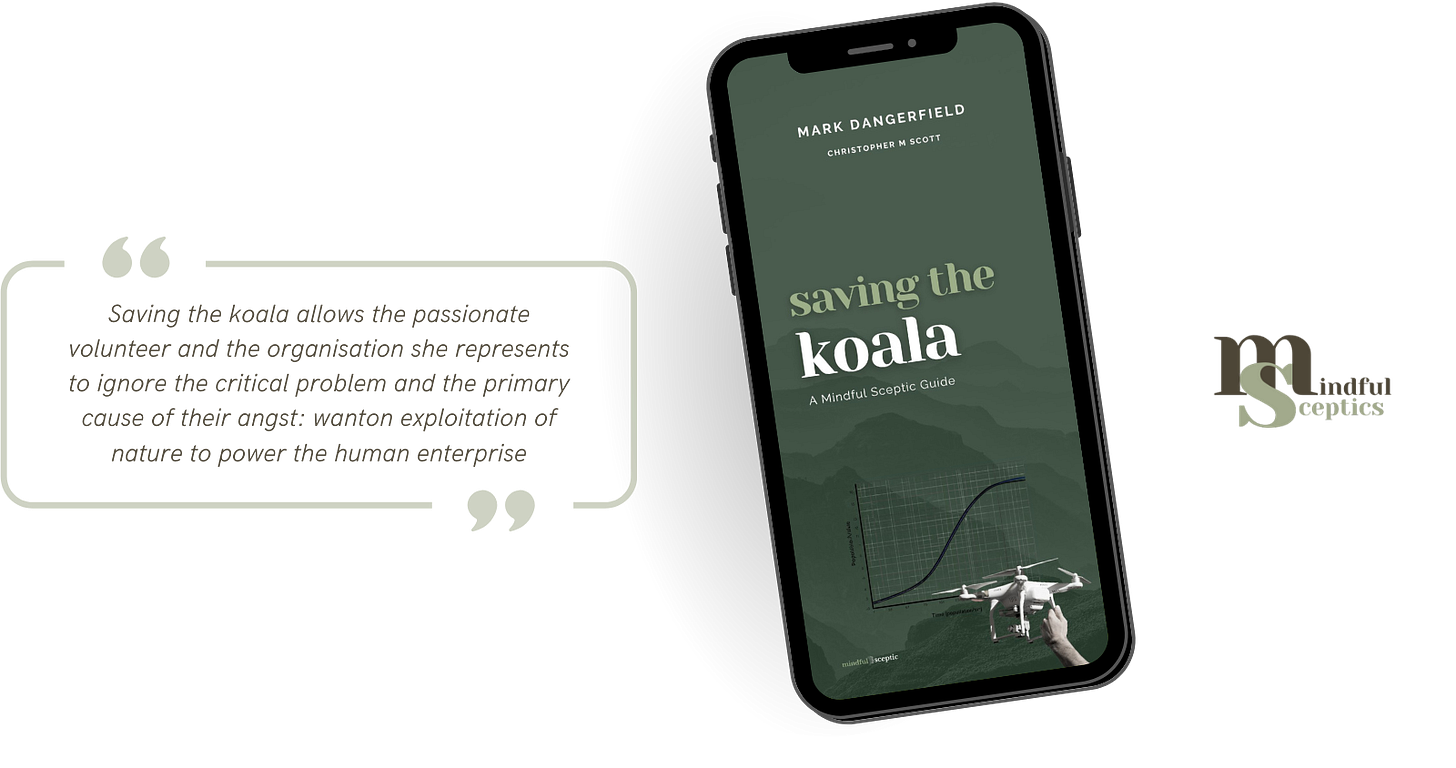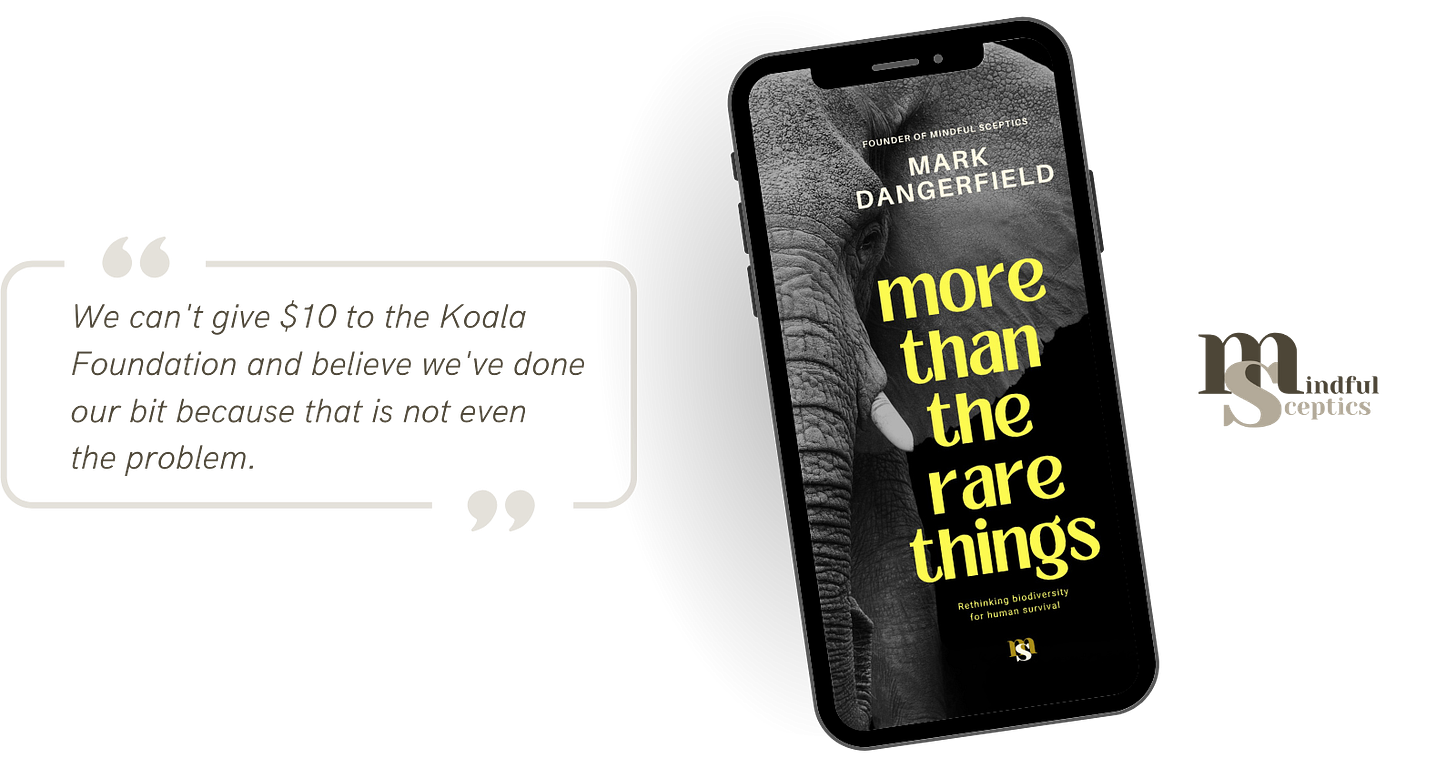Core Idea
We are mesmerised by pandas, polar bears, and koalas. Their wide eyes and fuzzy faces trigger something primal in our brains. It’s the same circuitry that makes us coo at babies.
Conservation groups know this. They plaster these creatures across their appeals because cuteness opens wallets faster than any rational argument ever could.
But here’s the problem… while we’re busy paying money to save the charismatic megafauna, we’re missing the real environmental catastrophe happening beneath our feet.
The soil microbes that cycle nutrients through ecosystems don’t have marketing departments. The mycorrhizal fungi that connect forest root systems lack public relations teams. The countless invertebrates that process organic matter and pollinate plants will rarely star in a David Attenborough documentary.
Yet these unsexy organisms are what actually keep the planet’s life support systems functioning.
Counterpoint
The comfortable story we tell ourselves is that protecting flagship species creates an “umbrella effect”. So if we save the tiger’s habitat, you’ll automatically protect everything else living there.
It’s a neat narrative that lets us feel good about our donations to the World Wildlife Fund while avoiding the harder truths about how ecosystems actually work.
This umbrella theory is largely fiction.
Most endangered charismatic species require such specific management interventions that their conservation becomes a resource-intensive performance that bears little resemblance to actual ecosystem health.
We spend millions on translocating pandas and breeding programs for northern white rhinos, all while agricultural runoff destroys the ocean’s phytoplankton populations.
We rally to save polar bears while industrial fishing collapses the food webs they depend on.
The koala obsession perfectly illustrates this misdirection. While conservationists argue over tree-planting schemes and habitat corridors, Australia exports 300 million tonnes of coal annually. The cognitive dissonance is staggering.
We treat extinction as an isolated tragedy rather than a symptom of a production system that treats nature as an input to be consumed rather than a partner in a delicate dance of cycles and limits.
The real crisis isn’t that we might lose pandas. We’re systematically dismantling the biological and chemical processes that make complex life possible on this planet. Soil degradation. Ocean acidification. The collapse of insect populations. These are the unglamorous realities that determine whether human civilisation survives the next century.
Thought Challenges
The Triage Test… Next time you see a conservation appeal, ask yourself what would happen to this ecosystem if this flagship species disappeared tomorrow, versus what would happen if the soil biology collapsed? Which scenario actually threatens the system’s capacity to support life?
Follow the Money Trail… When a conservation group asks for donations to “save” an iconic species, demand specifics. How much goes to actual habitat protection versus administration, marketing, and symbolic interventions? What percentage of efforts address the systemic drivers of habitat destruction versus treating symptoms?
Closing Reflection
The harsh truth is that most iconic species conservation efforts are performances designed to make us feel like we’re addressing environmental collapse while carefully avoiding any challenge to the economic arrangements that drive it.
Real conservation work is less photogenic and far more threatening to entrenched interests. It means questioning growth imperatives, industrial agriculture, and consumption patterns that generate the profits funding our comfortable lives.
The koala will survive or it won’t. But the biological foundations that make multicellular life possible won’t care about our feelings either way.
Evidence Support
Caro, T., & O’Doherty, G. (1999). “On the use of surrogate species in conservation biology.” Conservation Biology, 13(4), 805-814.
TL;DR… critiques the use of flagship and surrogate species, showing that conservation efforts focused on icons like pandas or tigers rarely translate into meaningful ecosystem protection or biodiversity preservation. It demonstrates that symbolic species often fail to represent broader ecological needs.
Relevance to insight… exposes how conservation messaging obsessed with icons overlooks the ordinary species—soil organisms, insects, plants—that actually underpin ecosystem resilience. Their evidence decisively challenges the assumption that saving charismatic megafauna equates to safeguarding ecosystems.
Simberloff, D. (1998). Flagships, umbrellas, and keystones: Is single-species management passé? Biological Conservation, 83(3), 247-257.
TL;DR… examines whether conservation paradigms that centre attention on key species—flagships, umbrellas, keystones—truly benefit ecosystems. He finds these approaches are often scientifically weak, risk neglecting systemic threats, and fail to halt biodiversity loss.
Relevance to insight… idolising single species distracts from systemic solutions such as habitat restoration, trophic complexity, and maintenance of functional biodiversity. Simberloff’s synthesis is a cornerstone for reforming ecological priorities.
Seddon, P.J., Griffiths, C.J., Soorae, P.S., & Armstrong, D.P. (2014). Reversing defaunation: Restoring species in a changing world. Science, 345(6195), 406-412.
TL;DR… species reintroductions, often built around icons, struggle to function unless broader ecosystem processes and common species are restored. Success depends on systemic rehabilitation, not charismatic mascot selection.
Relevance to insight… rigorous evidence that conservation failure is mostly about neglecting ordinary, abundant species and invisible ecosystem processes. It rebuts the comforting myth that icons safeguard ecological function.
Lindenmayer, D.B., & Likens, G.E. (2011). Direct measurement versus surrogate indicator species for evaluating the ecological health of ecosystems. Biological Conservation, 144(5), 1175-1186.
TL;DR… relying on surrogate, flagship, or indicator species as proxies for ecosystem health leads to unreliable conservation outcomes. Direct measurement of ecological health and function is a far superior science.
Relevance to insight… the strongest scientific foundation that icons are no substitute for evidence-led analysis of ecological processes. Clarity demands sacrificing emotionally satisfying distractions for functional rigour.
Each of these papers presents peer-reviewed, methodical evidence that conservation’s focus on iconic species diverts critical attention and resources from the invisible systems and ordinary life forms that actually sustain ecosystems. The research is critically relevant for contrarian thinkers because it exposes the comfort-driven narrative that conservation icons are sufficient, systematically debunks single-species approaches, and argues for a radical refocusing on systemic, evidence-based preservation.







